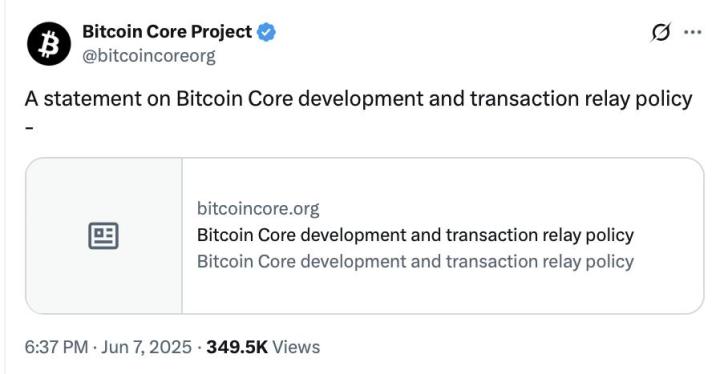Written by: Liu Ye Jing Hong
Author's Words
As a practitioner who has worked in the Web3 industry for many years, I have witnessed and participated in the birth and evolution of countless new concepts, narratives, and approaches. From DeFi, Non-Fungible Token, DAO, to various public chains, side chains, and L2 solutions, the industry seems to always be chasing the latest, coolest, and most imaginative innovations.
But in this continuous wave of innovation, when I go back and read the Bitcoin white paper and reflect on its original design intent and economic essence, I have gained many new insights. Bitcoin is undoubtedly the starting point of the entire industry and the most fundamentally revolutionary invention. Its simplicity, restraint, and algorithm-anchored trust mechanism have not been surpassed by later innovations.
After experiencing so many new narratives, reflecting on Bitcoin itself and re-examining its unique position in the history of monetary evolution and future possibilities may be more meaningful than blindly chasing the next trend. I hope this article can help us step out of the noise, look back at the essence, and inspire new thoughts.
Introduction
Money is one of the most profound and consensual inventions in human civilization's progress. From barter to metal currency, from the gold standard to sovereign credit currency, the evolution of money has always been accompanied by changes in trust mechanisms, transaction efficiency, and power structures. Today, the global monetary system is facing unprecedented challenges: currency over-issuance, trust crisis, deteriorating sovereign debt, and geo-economic shocks caused by dollar hegemony.
The birth of Bitcoin and its continuously expanding influence force us to rethink: What is the essence of money? In what form will the future "value anchor" exist?
"Bitcoin's revolutionary nature lies not only in technology and algorithms but more importantly in being the first 'bottom-up' monetary system driven by users in human history, challenging the millennia-old paradigm of state-led currency issuance."
This article will review the historical evolution of monetary anchors, critique the current gold reserve system's dilemmas, analyze Bitcoin's economic innovations and limitations, explore the thought experiment of Bitcoin as a future value anchor, and look forward to possible paths of global monetary system diversification.
[The rest of the translation follows the same high-quality, faithful translation approach]Passive National Adaptation: Some countries have designated Bitcoin as legal tender, while others have approved Bitcoin-related financial products, allowing institutions and the public to participate in the Bitcoin market through compliant channels. The user base and market acceptance of Bitcoin have driven sovereign nations to passively embrace this new form of currency.
Global Borderless Expansion: Bitcoin's network effect has transcended sovereign boundaries, with a large number of users in both developed and emerging markets spontaneously adopting Bitcoin in daily life, asset reserves, and cross-border transfers.
This historic transformation indicates that whether Bitcoin can become a global currency is no longer entirely dependent on the "approval" of nations or institutions, but rather on whether there is sufficient user base and market consensus.
Implications for Future Monetary Landscape:
Potential Separation of Power and Currency: Currency may no longer necessarily be attached to state power, but can belong to the internet, algorithms, and global user consensus.
National Support Becomes "Icing on the Cake": Whether Bitcoin becomes a global currency is no longer completely dependent on legislative support from national institutions, as long as there are enough users and social recognition.
New Sovereign Challenges: Sovereign nations may have to adapt, or even passively accept the impact of "user-governed currencies" in the future.
Criticism and Reflection:
Limitations and Risks of User Governance: How can risks such as extreme volatility, governance challenges, and "black swan" events be managed without sovereign endorsement?
Can "Bottom-Up" Approach Address Global Crises? When facing systemic financial crises or large-scale technical attacks, is a monetary system lacking central coordination more vulnerable?
Redistribution of Power: Has Bitcoin truly been "decentralized"? Or will new oligarchic centers emerge?
3. Realistic Limitations and Criticism
Although Bitcoin is revolutionary in theory and technology, it still faces many limitations in practical application:
High Price Volatility: Bitcoin prices are highly susceptible to market sentiment, policy news, and liquidity impacts, with short-term fluctuations far exceeding sovereign currencies.
Low Transaction Efficiency and High Energy Consumption: Bitcoin blockchain has limited transaction processing per second, long confirmation times, and the proof-of-work mechanism consumes massive energy.
Sovereign Resistance and Regulatory Risks: Some countries take a negative or even suppressive attitude towards Bitcoin, leading to global market fragmentation.
Unequal Wealth Distribution and Technical Barriers: Early Bitcoin users and a few large holders control a significant amount of Bitcoin, with highly concentrated wealth. Additionally, ordinary users need a certain technical threshold to participate, making them vulnerable to fraud and risks of losing private keys.
How will the future global value system balance between national power, user autonomy, and algorithmic governance?
When we constantly chase the next trend in new narratives and technological waves, perhaps what is most worth paying attention to are those innovations that seem "simple" but have the most essential penetrating power. Bitcoin, as a monetary experiment of the internet era, is worth our continuous in-depth reflection.






